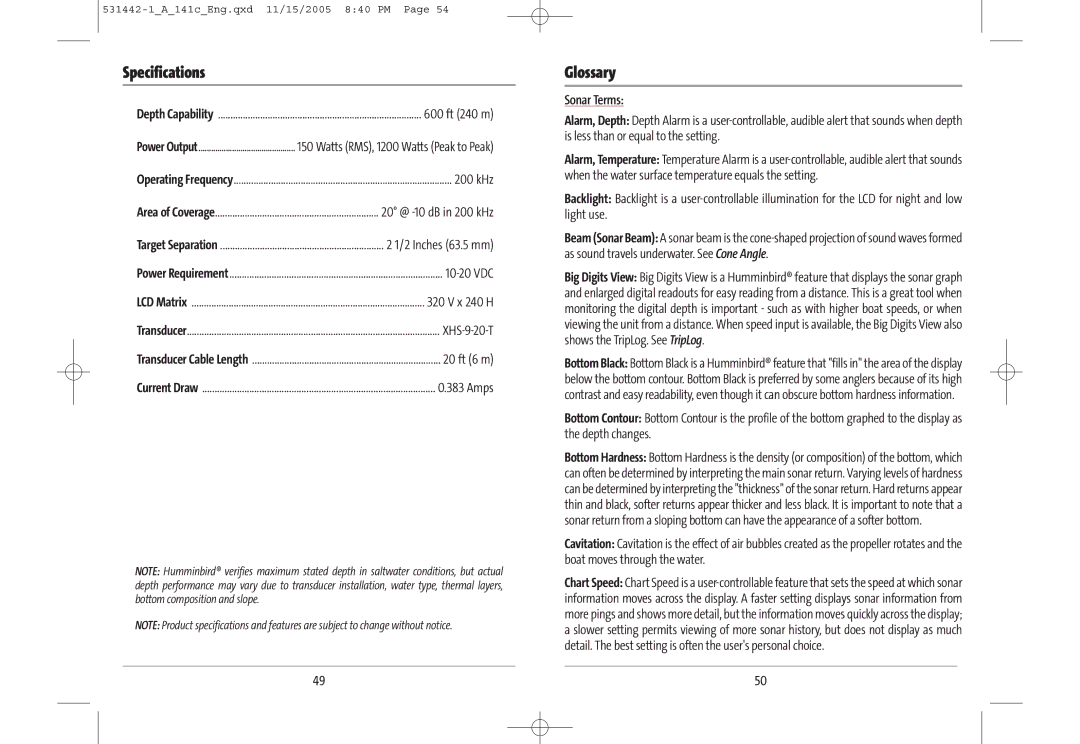
Specifications
Depth Capability | 600 ft (240 m) |
Power Output | 150 Watts (RMS), 1200 Watts (Peak to Peak) |
Operating Frequency | 200 kHz |
Area of Coverage | 20° @ |
Target Separation | 2 1/2 Inches (63.5 mm) |
Power Requirement | |
LCD Matrix | 320 V x 240 H |
Transducer | |
Transducer Cable Length | 20 ft (6 m) |
Current Draw | 0.383 Amps |
NOTE: Humminbird® verifies maximum stated depth in saltwater conditions, but actual depth performance may vary due to transducer installation, water type, thermal layers, bottom composition and slope.
NOTE: Product specifications and features are subject to change without notice.
Glossary
Sonar Terms:
Alarm, Depth: Depth Alarm is a
Alarm, Temperature: Temperature Alarm is a
Backlight: Backlight is a
Beam (Sonar Beam): A sonar beam is the
Big Digits View: Big Digits View is a Humminbird® feature that displays the sonar graph and enlarged digital readouts for easy reading from a distance. This is a great tool when monitoring the digital depth is important - such as with higher boat speeds, or when viewing the unit from a distance. When speed input is available, the Big Digits View also shows the TripLog. See TripLog.
Bottom Black: Bottom Black is a Humminbird® feature that "fills in" the area of the display below the bottom contour. Bottom Black is preferred by some anglers because of its high contrast and easy readability, even though it can obscure bottom hardness information.
Bottom Contour: Bottom Contour is the profile of the bottom graphed to the display as the depth changes.
Bottom Hardness: Bottom Hardness is the density (or composition) of the bottom, which can often be determined by interpreting the main sonar return. Varying levels of hardness can be determined by interpreting the "thickness" of the sonar return. Hard returns appear thin and black, softer returns appear thicker and less black. It is important to note that a sonar return from a sloping bottom can have the appearance of a softer bottom.
Cavitation: Cavitation is the effect of air bubbles created as the propeller rotates and the boat moves through the water.
Chart Speed: Chart Speed is a
49 | 50 |
